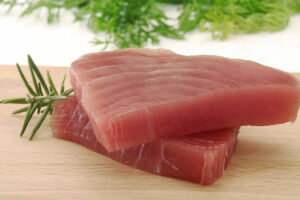7 mistakes to avoid when signing up for Medicare

Securing adequate healthcare coverage is paramount, especially as one approaches retirement. Many people above 65 consider Medicare, the federal health insurance program for this age group. While Medicare offers numerous benefits, the enrollment process can often be daunting and complex. Consequently, one can overlook critical aspects, leading to financial strain and delays in accessing healthcare services. Here are a few common mistakes one must avoid when signing up for Medicare.
Not signing up at the right time
One of the most critical mistakes to avoid when enrolling for Medicare is not doing so at the right time. The initial enrollment period (IEP) for individuals about to turn 65 begins three months before their birth month and ends three months after that month. In other words, one has an IEP of seven months. If a person fails to enroll during this period, they still have a chance to sign up during the general enrollment period (GEP), which is from January 1 to March 31. However, this can lead to higher premiums and delays in accessing necessary healthcare services. Moreover, after missing out on the IEP, individuals would have to wait until the next GEP, leaving them without coverage for an extended duration.
Missing the special enrolment period
When signing up for Medicare, many do not take advantage of the special enrollment period (SEP), which can be a big mistake. The SEP is a specific time window when an individual above 65 who has missed the IEP can enroll for Medicare without incurring extra charges. One becomes eligible for this special period during certain life events, such as retirement, losing employer-sponsored insurance, moving to a new address, and losing coverage from their spouse’s insurance. On missing the SEP, the individual may have to wait for the next GEP, leading to coverage gaps and financial repercussions.
Not picking a Medigap plan
Medigap, or Medicare Supplement Insurance, is designed to cover the “gaps” in Original Medicare. It helps people cover out-of-pocket costs, such as deductibles, copayments, and coinsurance. Failing to select a Medigap plan after enrolling in Medicare may leave one vulnerable to substantial healthcare expenses that the latter alone does not fully address. Moreover, these costs can add up over time, making it difficult to manage health expenses despite having Medicare coverage. Hence, selecting a suitable Medigap plan is an essential step one cannot ignore.
Overlooking the late-enrollment penalties
One must be aware of the various late-enrollment penalties associated with Medicare. These penalties are incurred if someone delays signing up for certain Medicare plans without qualifying for specific exemptions. For instance, if a person is not under a SEP and delays their enrollment for Part B for a year, their monthly premium of Part B will increase by 10%. Being unaware of these penalties can lead to unexpected financial strain.
Not knowing how Medicare differs from Medicare Advantage
Individuals must understand the differences between Original Medicare and Medicare Advantage. Original Medicare is a government program that offers coverage for hospital costs, doctor visits, and certain outpatient services. It may not cover the expenses associated with prescribed treatments. On the other hand, Medicare Advantage is provided by private insurance companies. It often includes additional benefits, like coverage for prescribed treatment options (along with the usual coverage of Original Medicare).
Enabling automatic renewal
When signing up for a health insurance policy, people are often given an option for auto renewal. Opting for automatic renewal can be a mistake because it might lock one into a plan that no longer suits their needs or budget. Instead, individuals must regularly review Medicare plans and switch to those whose coverage aligns with their changing healthcare requirements. Not doing so might lead to higher expenses in the long run.
Not knowing how Medicare works with existing policies
Individuals must understand how Medicare aligns with their existing policies and coverages. For instance, if someone is still working as they approach 65, and their employer has 20 or more employees, their private health insurance is considered primary and Medicare secondary. This means their Medicare covers what their private plan does not. In such a scenario, enrolling in Medicare Part B while under a private plan can be costly and limit future Medigap options.



